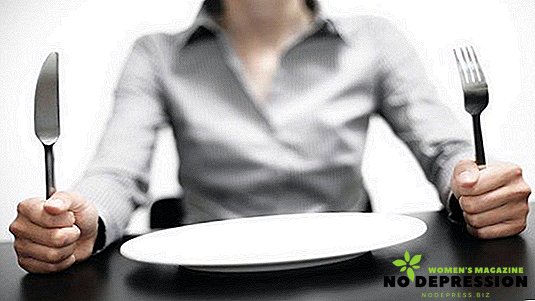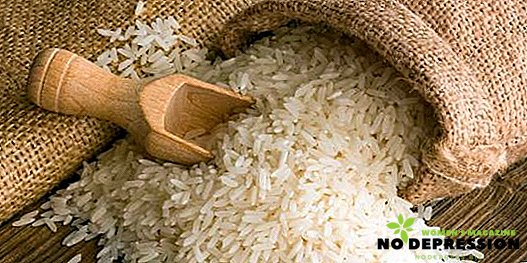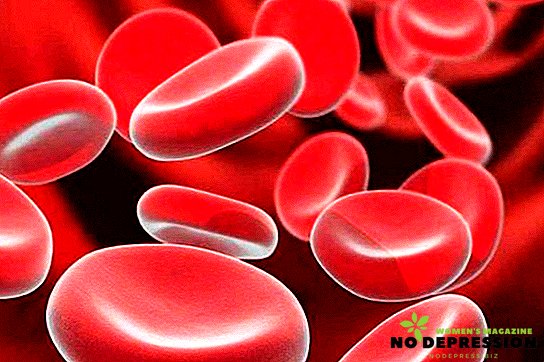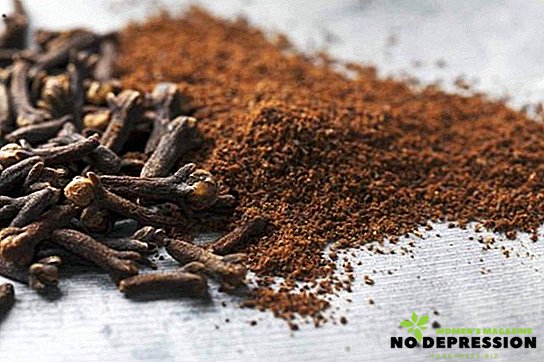Constipation in children is a rather frequent phenomenon, since babies do not fully form the digestive system, the intestines and other organs malfunction, and the microflora is far from ideal. That is why it is so important for parents not to panic, if a child cannot go to the toilet - there are many laxatives that will help empty the body without harm.
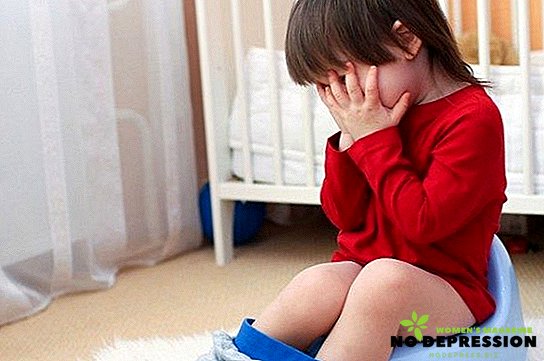
The rate of stool frequency in children
When constipation, the child usually complains of pain in the abdomen, the inability to go to the toilet, there may be apathy, headache - signs of intoxication.
It is worth remembering that everyone goes to the toilet differently: someone more often, someone less often.
For this reason, you need to learn more about the approximate standards of stool frequency:
- Newborn babies. Kids up to 4 months can defecate about 8 times a day, and one emptying can be considered the norm, and all eight. And in this period, the fecal mass is liquid, not formed.
- Till two years. At this age, it is considered normal if the child is emptied up to three times a day. The feces already have a smell, they have a denser consistency.
- 2-4 years. Such children usually go to the toilet 1-2 times.
- 4-6 years. It is considered a norm, and 1-2 going to the toilet a day, and once every two days.
Deviation is considered if the stool frequency differs from the above data by 1-2 days.
Principle of action of drugs
Laxative preparations for children are of these types:
- synthetic;
- herbal medicine.
Despite the fact that they are sold without prescriptions, it is difficult to call such drugs harmless. That is why it is so important to know what drugs are and how to use them.
By the principle of action such funds are divided into the following groups:
 Medicines irritating the intestinal mucosa. The action of the drug begins on average 1.5-2 hours after administration. Directed to stimulate the output of fecal masses that accumulate in the intestine.
Medicines irritating the intestinal mucosa. The action of the drug begins on average 1.5-2 hours after administration. Directed to stimulate the output of fecal masses that accumulate in the intestine.- Drugs fillers. When released into the intestine, such funds increase in size, the digestive tract is filled with fluid. Due to this, feces leave the body faster.
- Medicines that retain water in the intestines: they pull it out through the intestinal walls, they accumulate. Liquid softens the feces, which leads to a bowel movement.
- Drugs acting in the small intestine. Most often they contain oil, due to which the feces "slips out" of the intestines. Begin to act three hours after admission.
Requirements for "baby" laxative
Preparations for children should be non-toxic, act gently, and should be of vegetable origin.
In addition, such tools should not cause the child to become addictive, cause the development of such a syndrome as "lazy gut", when a person can not be emptied without taking the medication, because in the future this can lead to degenerative changes in the bowel.
Under this description are best suited drugs that act on the basis of natural oils and other ingredients, softening fecal masses. It is best for babies to take lactulose-based products: in addition to removing feces, they will help restore the intestinal microflora, which will avoid constipation in the future.
 Children's drugs are no different from those that take adults: it drops, candles, powders, syrups. Consumption of laxatives in solid form (tablets or capsules) is allowed only for adults, but for children under 5 years old it is better to give laxatives in the form of drops or a candle.
Children's drugs are no different from those that take adults: it drops, candles, powders, syrups. Consumption of laxatives in solid form (tablets or capsules) is allowed only for adults, but for children under 5 years old it is better to give laxatives in the form of drops or a candle.
It is worth considering that the candles act faster than pills, so if you need to urgently eliminate constipation, it is better to choose them. But if you choose between syrup and tablets, it is better to choose a syrup.
Remember that you should not give laxatives to a child if constipation is caused by an acute bowel disease that requires immediate surgery, for example, appendicitis. It is also important to remember that any medication helps to get rid of the symptoms, but not the cause of the disease.
Laxative drugs for constipation in children
Consider the main laxatives that can be used to treat constipation in children.
Duphalac
Transparent viscous syrup, which is made from dietary fiber, lactulose. The tool improves peristalsis, retains water, softens fecal masses, restores microflora. Suitable even for newborns.
The main advantage is that the tool is practically not absorbed, quickly reaches the problem area and is also quickly removed. Main contraindications: intestinal obstruction, diabetes mellitus. Give syrup once a day, and it is best in the morning and on an empty stomach.

Sodium sulfate
Saline laxative. It can be taken only after consulting a doctor so that there are no negative consequences, because salt very aggressively acts on the intestines, draws water out of the body to soften the feces.
If salt is used uncontrollably, dehydration can occur. The dosage is calculated according to the following scheme: 1 g of funds for 1 year of life. Contraindications include the presence of any inflammatory processes in the intestine.
Among saline laxatives can also be distinguished magnesium salt of sulfuric acid. This is a fairly quick laxative for constipation, however, it is not recommended for children under 6 years of age.
Normase
If you are looking for a laxative for children aged 2-3 years, we can recommend Normaz. This drug is based on lactulose, in addition to its composition includes probiotics, which help to restore the intestinal microflora.
Contraindications include intestinal obstruction or inflammatory foci. Also, the tool may start to conflict with antibiotics, because their simultaneous reception should take place only under the supervision of a physician.
Ideal for children of any age, including infants. The dose is as follows:
- 5 ml - for children up to a year;
- 5-10 ml - up to 6 years;
- 10-15 ml - older than 10 years.

Forlax
This laxative works as a filler: it swells inside, resulting in increased intestinal motility, due to which it is possible to solve the problem of constipation rather quickly. Suitable for children over 8 years old. Contraindications include: obstruction of the intestine, the presence of inflammation.

Helping
If you need a drug for children older than three years, Pomogush will be perfect: on the basis of lactulose, there are strawberry leaves, fruits of fennel, caraway seeds, cherries, additionally vitamins C and B are included in the composition, but it can be mixed with juices or tea.

Microlax
This laxative is produced in the form of small capsules, inside of which contains a solution that effectively dilutes the feces. Since there are practically no contraindications for this remedy, it can be used to treat children under one year old. The drug begins to act literally 15 minutes after the introduction of the capsule.

Prelaks
Mild laxative, suitable for adults. For children created a separate - Prelabs-baby, it can be given including the newborn. The dosage is as follows:
- for babies: 10 ml of solution;
- at the age of 1-6 years: 15 ml;
- Children from 6 years old - 30 ml.
But to use the drug, if the constipation is additionally accompanied by vomiting and nausea, it is impossible.
Regulax
Means irritates the intestines. The effect occurs approximately 10 hours after administration. It is used for children over 12 years old.

Glycerol
The drug is sold in the form of rectal suppositories. Due to the content of glycerin is a mild effect on the intestines. Daily dose - 1 candle. You can use the drug from birth, though if constipation occurred in infants, you should always consult with your doctor.
Bisacodyl
Suitable for children from 2-3 years old. Used one-time, not suitable for systematic use.

Senade
Inexpensive remedy based on senna leaves. They can be taken for a long time, because Senade is not addictive. The effect occurs 6-7 hours after administration. Can be used for children over 6 years old.

Guttalaks
The drug irritates the intestines, collecting in it a liquid that helps to cope with constipation. The product is sold in the form of tablets or drops. Can be used for children over 4 years old.
Folk remedies for constipation
Some prefer to use not laxative medicines, but folk remedies. They act very effectively, but before taking them, in any case, you need to consult with a specialist.
One of the most famous folk remedies is dill. From it you need to prepare a decoction and give the child in the form of herbal tea. When it is received, the effect occurs after about 5 hours. If the child is already eating solid food, give him 3-4 prunes. The effect of their reception occurs after about 4 hours.
And to enhance efficiency, give 1 tsp. castor oil.
Power Features
If the baby is prone to constipation, you need to reconsider its diet. For example, if we talk about a child who is breastfed, then you need to adjust the food for the mother herself: you can’t eat heavy foods that can fix fecal matter, for example, white bread, cabbage, confectionery.
Best of all, if there are cereals, vegetables, baked apples in the diet, you should also drink at least 1.5 liters of water a day.
 If the child is on artificial feeding, it is necessary to observe the dosage. In addition, you should not include in the diet of children under three years old foods that lead to constipation: chocolate, rice, meat, chicken eggs.
If the child is on artificial feeding, it is necessary to observe the dosage. In addition, you should not include in the diet of children under three years old foods that lead to constipation: chocolate, rice, meat, chicken eggs.
Smoked products and pears also lead to constipation. To normalize the work of the intestine is best to give products that have a laxative effect: pumpkin, beets, zucchini, peaches.
When constipation food should not be bold and too plentiful: it is better to make portions of a small size, but in several approaches. Also in the diet must be fermented milk products, compotes, herbal teas.
Enema solution
If you decide to do an enema, the first thing you need to prepare is water: it should be boiled, the temperature should be a couple degrees warmer than room temperature. More effective enema will be if you add 1-2 tsp to the water. glycerin or instead of water use a decoction of chamomile. You can also use soapy water.
It is very important to choose the right volume of liquid (too little water - there will not be the desired effect, too much - it can cause pain):
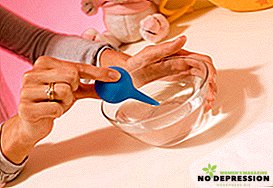 newborn baby - 25 ml;
newborn baby - 25 ml;- 1-2 months - 35 ml;
- 2-4 months - 55 ml;
- 6-9 months - 100 ml;
- child at the age of the year - 150 ml;
- for children up to two years - 230 ml;
- 2-6 years - 400 ml.
To carry out the procedure, prepare a small rubber "pear", and it should be boiled in advance. Also, do not do without a special rubber tip - a plastic product can cause a child pain.
Enema baby
If you are faced with constipation in infants and decide to hold an enema, then you need to put it very carefully. First, prepare a place: on the changing table, lay an oilcloth and diaper, put the baby on the back, lift the legs up. Best of all, if there is an assistant who will hold the baby.
The effect should come in about 10-15 minutes.
For children from a year old and older
The procedure is almost the same as an enema for newborns, but for older children it is more convenient to carry out the procedure on the side with slightly bent legs.
And remember that an enema is an exceptional procedure that must be applied if other methods do not help.


 Medicines irritating the intestinal mucosa. The action of the drug begins on average 1.5-2 hours after administration. Directed to stimulate the output of fecal masses that accumulate in the intestine.
Medicines irritating the intestinal mucosa. The action of the drug begins on average 1.5-2 hours after administration. Directed to stimulate the output of fecal masses that accumulate in the intestine. newborn baby - 25 ml;
newborn baby - 25 ml;